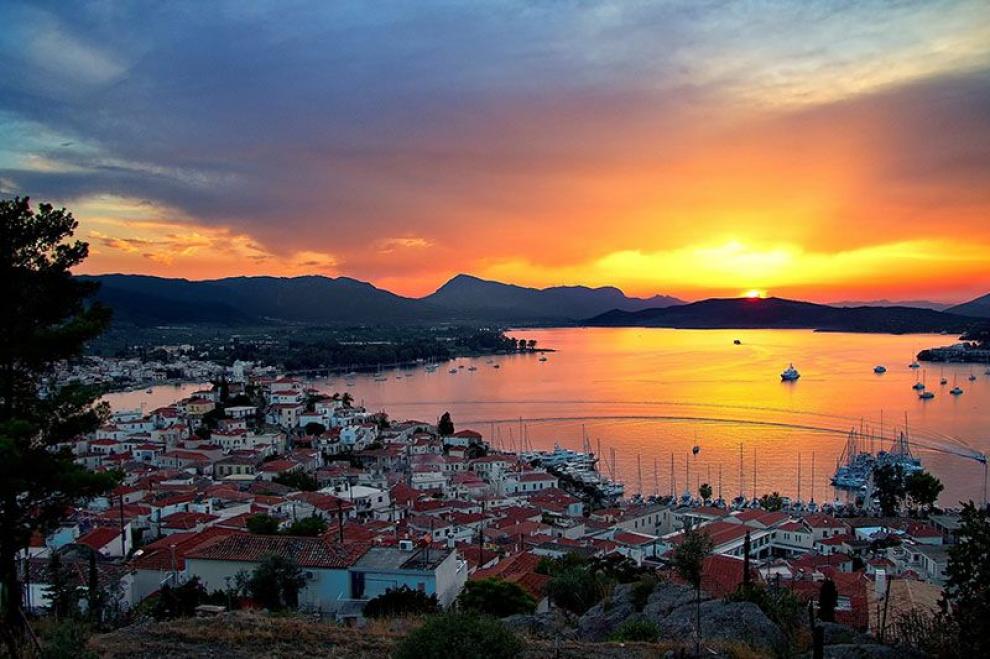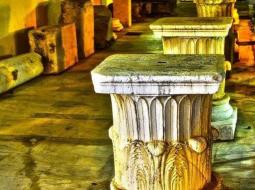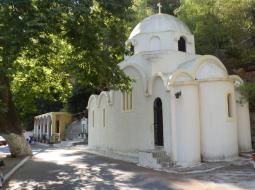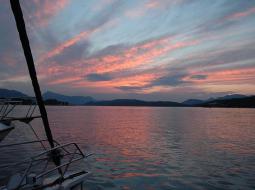Thessaloniki gets ready for its metro launch in November
The underground rapid transit lines have been under construction for almost two decades due to various project delays
 TheMayor.EU logo
TheMayor.EU logo 
In ancient times, Poros made up a part of the Roman Empire along with Trizina, to which it was a tributary. During Byzantine times, Poros were often attacked by the pirates who dominated the Aegean Sea.
The Venetians occupied Poros in 1484 and used it as a strategic port in their sea battles with the Ottomans. At that time Poros was the most powerful city of the wider area, also governing Methana Island, Epidaurus, Damalas (Trizina), Valario and Fanari. In this period, Paros island had about 15,000 inhabitants, making it one of the largest cities in Greece. In 1715 the Venetian rule ended.
The Ottoman Period in Poros began in 1715, much later than in the rest of the country. Shipping and commerce were the main activities of the inhabitants of Poros.
The island had a key role during the Greek Revolution in 1821, due to its strategic position. Poros was the place where the Greek revolutionary leaders, often met to discuss and plan their future actions. In 1828 in Poros was established the first Greek naval base and remained there until 1878. In September 1828, the ambassadors of the Great Powers, including France, England and Russia met in in the city with Ioannis Kapodistrias in order to determine the borders of the future Greek state, which was established in 1830.
Russia secured free shipping for its navy throughout the waters of the Ottoman Empire. As Russian naval activity developed, need arose for a supply station, and land was acquired at Poros town. Extensive materiel, coal, and food storage facilities were created, as well as a hardtack baking factory. The number of Russian residents in Poros increased and even a Russian school was created. In the early 20th century the Russian naval activity declined, and the abandoned buildings were left to decay. In 1989 the ruins in elaborately carved stone, were listed as protected architectural monuments.
Poros is a small island-pair in the southern part of the Saronic Gulf in Greece about 58 km south from Piraeus and separated from the Peloponnese by a 200 m wide sea channel. Its surface area is 23 sq. km. The population approximately is 4.000.
Among the main the activities of the Poros’ inhabitants are tourism, fishing and agriculture (mainly wheat, grapevines and olives).
Poros it is a popular weekend destination for Athenian travellers. Thanks to its interconnected road network and tourist infrastructure, the city is a popular resort for short holidays.

The Archeological Museum of Poros, located at Korizis Square was built in the 1960s on a plot of land donated by the Koryzis family. It houses findings from the Sanctuary of Poseidon, from ancient Troizen, and from other archaeological sites nearby.

The Holy Monastery of Zoodochos Pigi, founded in 1720 AD can be found some 4 km east of the main city of Poros island and is built on the slope of a pine forest. In 1814, a group of monks from Mount Athos, took refuge in this Monastery. A few years later, these same monks founded the Zoodochos Pigi Monastery at Longovarda. Katholiko, s a basilica with a dome and a tower-like belfry is used as monastery's primary church.

The first naval base in Greece, established in 1827 during the country's War of Independence, can be found in Poros. It, however, fell into disuse for a time as most of its activities were transferred to Salamis Naval Base in 1881. The site is still used today by the Hellenic Navy as a training centre for naval personnel.
Address: Karamanos Sq. 7, Poros 18020